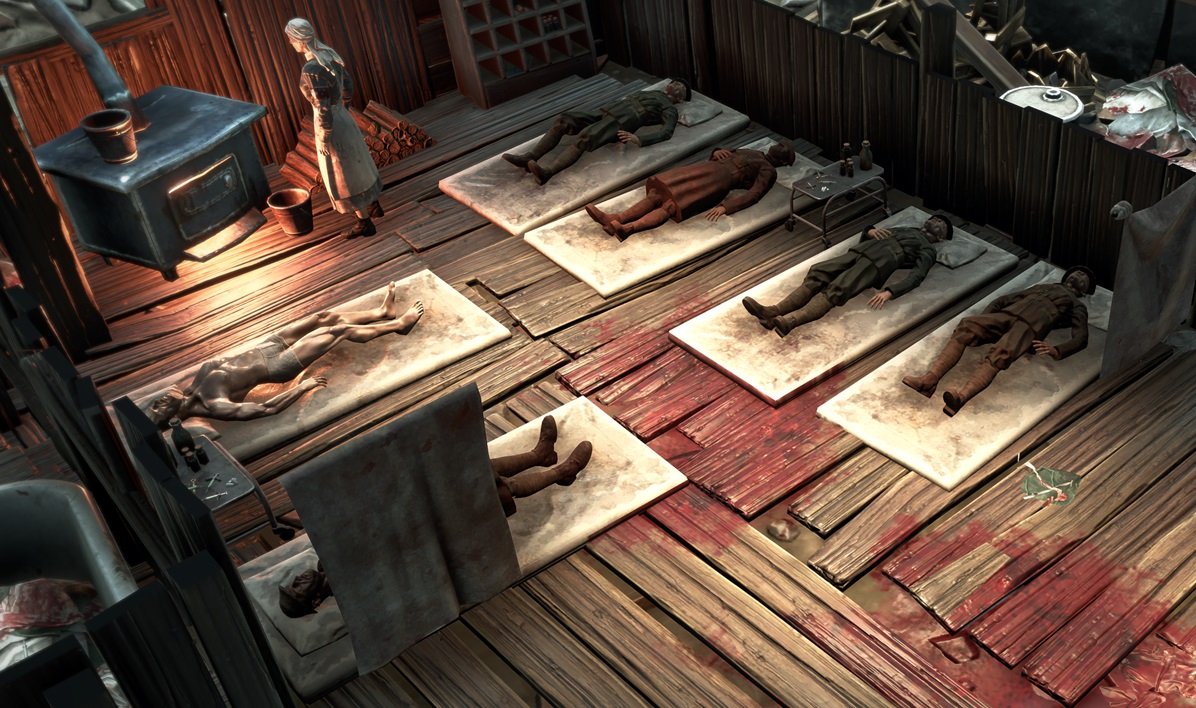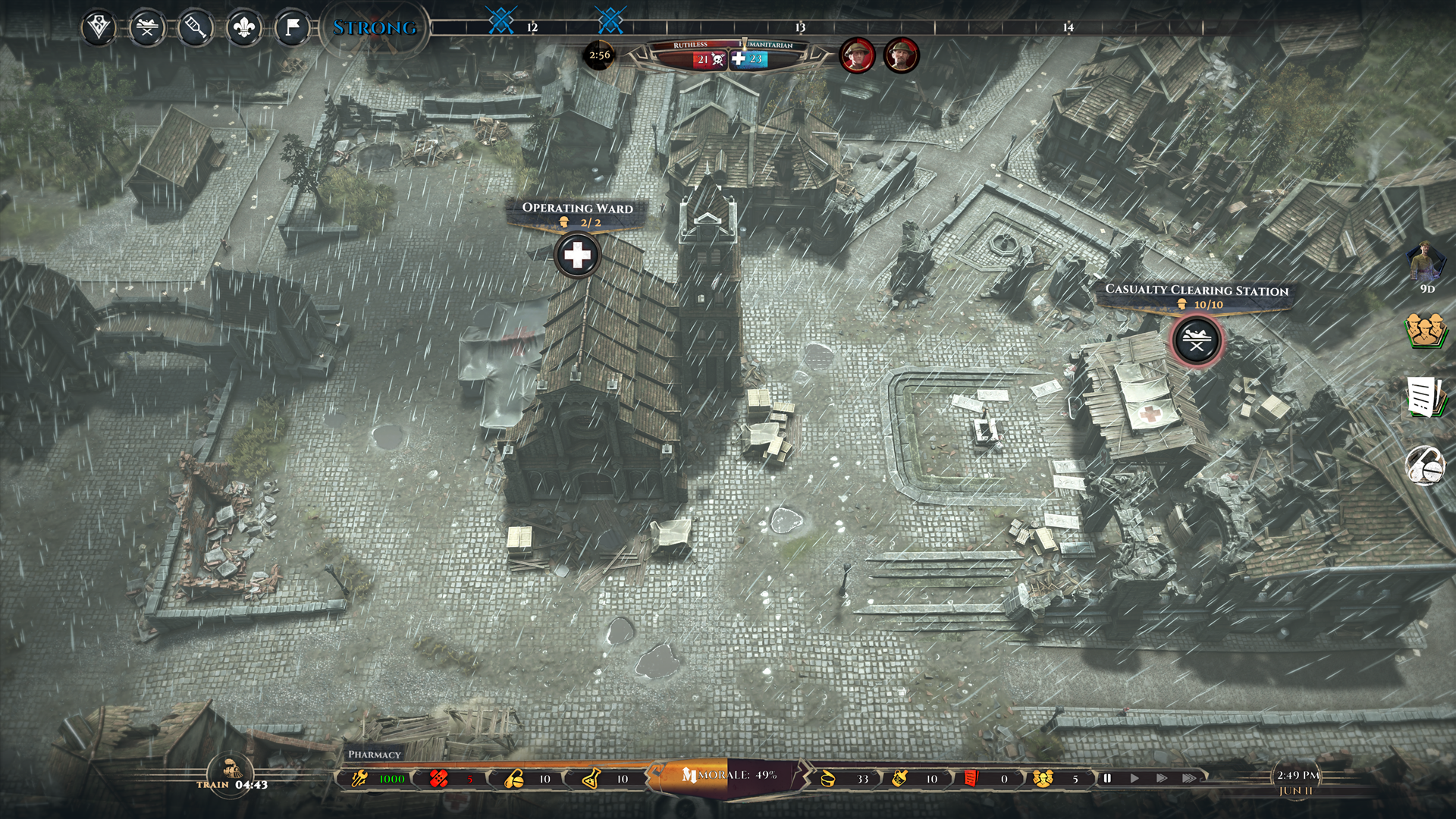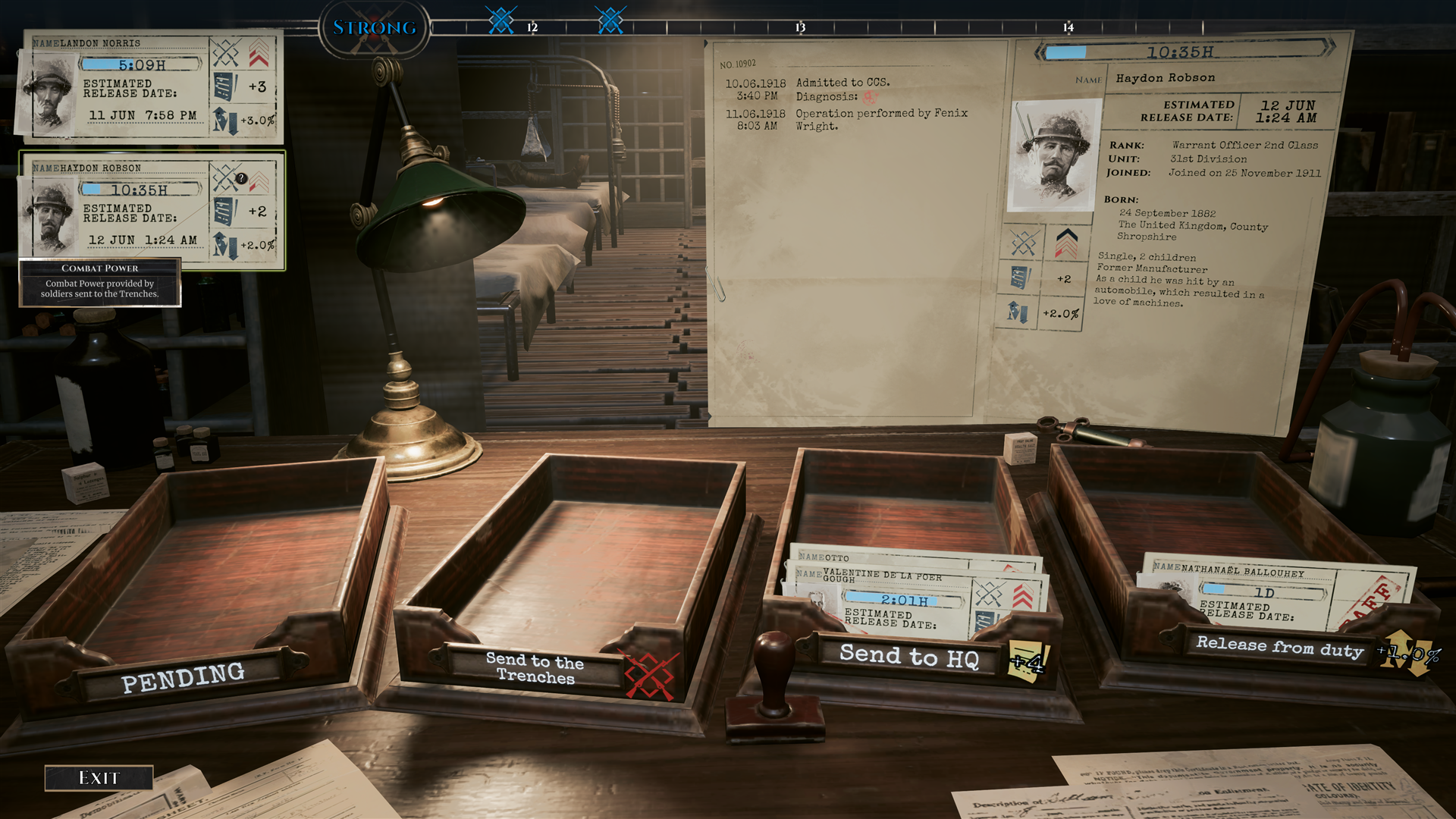
When I play Hearts of Iron, field hospitals are an icon I add to my divisions that gives me a bit of my lost manpower back after each battle. That's it. War Hospital, however, takes us down into the sickbeds and surgical clinics of the First World War's Western Front in a way that emphasizes the heroism and the difficult choices doctors, nurses, and medics had to make just behind the frontlines. The way it all fits together can be a bit clunky, but the way it tells too often untold stories of modern conflict is honestly refreshing.
Set in 1918, you're put in charge of a British field hospital that has been left to fend for itself after the nearby Allied forces were ordered to retreat. This unfolds into a complex survival strategy situation, as you have to maintain a morale bar to avoid being relieved of your command while holding off periodic German raids until a specified date. Every casualty that arrives, if successfully treated, can either be sent back to the trenches to aid in holding your position, shipped off to HQ to earn resources, or sent home for a morale boost.

Quite a bit of effort has been made to humanize the wounded soldiers you're treating, with each having a name, a place of birth, and a short bio. You might find yourself having to choose between an older single officer who gives to humanitarian causes and a young private with a wife and a first child on the way. This can be further complicated when certain patients are marked as VIPs, such as a German prisoner wanted by Allied intelligence or the son of a high-ranking officer who promises to make your life hell if his boy dies.
Quite a bit of effort has been made to humanize the wounded soldiers you're treating.
Beyond this, there's always the issue of who actually can be saved, given your limited time and resources. Patients can arrive with mild to severe wounds, in anything from good to critical condition, and with varying complexities and success chances associated with the operations they need. Someone needing a complex and lengthy operation with a low chance of success might just need to be put on painkillers to help them pass peacefully, because in the same amount of time, your doctors could have patched up three others with lesser injuries who have a high chance of making a full recovery. This becomes gut-wrenching at times, because you really can't save everyone. The basic gameplay loop is about holding the lives of many in your hands and deciding who will live.
Upgrading the hospital will let you hire more staff, build new facilities, and perform more complex operations with a higher success rate. This is done with a requisition currency that can only be earned by sporadic quests and by sending recovered soldiers to Allied HQ. You're somewhat limited by your food supply, though, with a small amount arriving by train with each new delivery of casualties and the ability to produce some in your kitchens. You'll also sometimes be prompted to take food from the locals of the war-torn Belgian countryside, which lowers morale, but might be necessary to keep the hospital afloat. Going down to half rations in times of emergency lowers morale steadily, while bigger rations with alcohol bring it back up.

I found the staff management to be fiddly at times, though. While doctors, who become fatigued based on the length and complexity of the operations they perform, can be scheduled for regular rest periods, nurses and engineers cannot. This means they will eventually collapse from exhaustion if you don't babysit their fatigue meter and manually yank them off of duty from time-to-time. Eventually, unlocking shift work and having at least two teams assigned to each post on an alternating, 12-hour rotation alleviates this. But it takes a long time to actually be able to afford that luxury, especially with the amount of food required to feed a full staff.
Medical supplies are another consideration, which you can also choose to produce yourself or buy from command. Some operations take more supplies than others, which is yet another consideration that plays into who you're able to treat. Eventually, you'll end up building wings that specialize in healing gas attacks and psychological trauma, which require their own specialized doctors and supplies. Shell shock doesn't fit very cleanly into this loop, though, because psych patients are treated identically to gunshot victims—their health will gradually deteriorate until they die if not treated, which isn't a hand-wave I'm especially thrilled about when it comes to mental illness.
Keep up to date with the most important stories and the best deals, as picked by the PC Gamer team.

Combat is definitely not an emphasis here, but it is still important, because not having enough soldiers in the trenches when a raid occurs is an immediate game over. There's a certain grim inevitability to the idea that you need to save the lives of so many of these fighters before sending them directly back into hell. They may even be wounded again in the next raid and wind up right back on the operating table. This time, you might not be able to do anything to help them.
I'm really glad War Hospital exists, and I think the decision to focus on saving lives instead of ending them is something we could stand to see more of in games about historical conflicts. The core loop is inherently compelling and can even be emotionally affecting. But it's a bit clunky and inelegant as a management game, mainly in how it tackles staff and resource management and doles out hospital upgrades. It may be that I haven't cracked the "right" way to play yet in my first 20 hours or so, but if so, it's certainly not intuitive. It's not the type of game I love to play. But it is the kind I would encourage you to give a try.
Len Hafer is a freelancer and lifelong PC gamer with a specialty in strategy, RPGs, horror, and survival games. A chance encounter with Warcraft 2: Tides of Darkness changed her life forever. Today, her favorites include the grand strategy games from Paradox Interactive like Crusader Kings and Europa Universalis, and thought-provoking, story-rich RPGs like Persona 5 and Disco Elysium. She also loves history, hiking in the mountains of Colorado, and heavy metal music.

